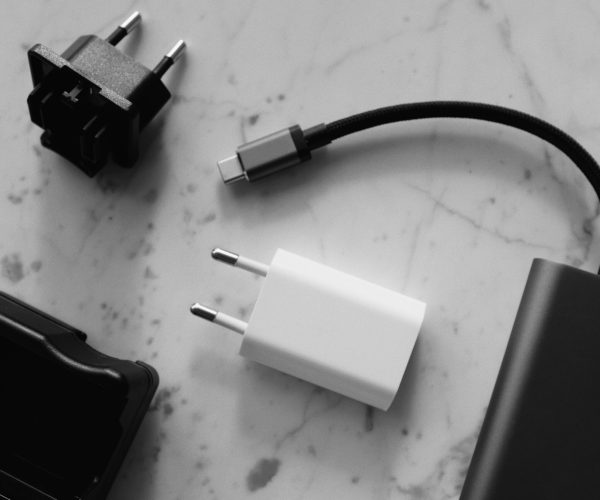UPS Maintenance Benefits: Extending the Life of Your Power Backup System
Due to the country’s rapid technological development and the ongoing difficulties presented by load shedding, Uninterrupted Power Supply (UPS) systems have become essential for modern businesses in South Africa. Sustaining important operations during power outages is critical for preserving continuity of service, avoiding data loss, and keeping production levels high. A business in South Africa nowadays is impossible to imagine without a trustworthy power backup system.
To keep it running smoothly and reliably for many years to come, your UPS needs regular maintenance just like any other piece of equipment. Effective UPS maintenance relies heavily on appropriate installation in addition to frequent checks and cleanings.
When deciding where to install the UPS system, make sure it will be in a dry, well-ventilated, and cool area. Check the instructions to see what the optimal temperature is for use. To keep the UPS system within the temperature range recommended by the manufacturer, an exhaust fan should be used in areas without air conditioning. You should also avoid placing the UPS near any windows or other potential sources of heat.
Contact our specialist right away to learn more about our cost-effective copier rentals or the top printers for sale in South Africa. We also offer a range of paper shredders for sale, including the world-renowned Kobra paper shredders.

Eliminating potential entry points for dust, moisture, caustic chemicals, water spills, and rodents is vital in the area around the UPS system. Clear any debris from the air vents and leave at least two feet of space between the unit and the wall during installation. Never place the UPS battery in a hot or damp location.
Qualified electricians alone should check input and frequency voltages, output and load currents and battery voltage on a regular basis while wearing proper electrical safety attire. Make sure you don’t overload the UPS by connecting more power than the manufacturer suggests. If you plan to install your equipment in a mountainous area, be sure to pick a processor with proper input and output circuits, and think about including lightning arrestors.
Reduce the likelihood of a drop in voltage by placing the UPS close to the batteries and employing cables of sufficient quality and amperage rating at the input and output. Make sure the current energy metres can accurately measure usage before settling on a UPS. Use the necessary earthing methods to guarantee the UPS is connected correctly. When deciding how many batteries to buy, it’s important to think about the load, UPS capacity, the probability of power fluctuations, outages, and the needed backup time, and to consult your supplier.
Putting batteries back on charge as soon as possible after use will extend their life. The performance of your device can suffer if you wait to replace depleted batteries. Looking at the UPS maintenance benefits.
What to Do Once a Year
Clean your UPS completely, paying special attention to the fans, to kick off the preventative maintenance routine. A UPS’s transfer switches, circuit breakers, and service bypasses should all be in good working order before any other maintenance is attempted.
Carefully check all the mechanical parts of the system, looking for any signs of damage or wear. Examine the electrical and mechanical connections between cells to ensure the longevity of the battery.
Perform a thorough functional test, looking at the UPS and its individual components including the rectifiers and inverters as well as the fixed switches and the manual bypass. Make sure the UPS is producing the right amount of power and that the load is being distributed evenly throughout the different phases.
All monitoring and signalling gear should be put through a functional examination to ensure it is working properly. Perform power loss simulations to test the UPS’s efficacy under real-world conditions. You can count on your UPS to perform reliably in any situation as long as you follow this careful maintenance programme.
What to Do At Regular Intervals Throughout the Year
During regular maintenance of machinery, it is advisable to perform a comprehensive examination to identify potential problems, including loose connections, burnt insulation, and indications of deterioration.
In order to protect your UPS from potential compromise due to hazardous substances, it is advisable to conduct a visual inspection for any signs of liquid contamination. This contamination may arise from several sources, such as batteries and semiconductors.
It is imperative to regularly clean and vacuum enclosures in order to remove any particles or dust that could potentially hinder the optimal performance of equipment. Furthermore, evaluate the efficacy of the heating, ventilation, and air conditioning (HVAC) system in controlling and maintaining optimal levels of temperature and humidity.

The objective is to assess the functional reliability of the UPS’s transfer switches, circuit breakers, and routine servicing bypasses.
It is important to acknowledge that a UPS is specifically engineered to accommodate a limited duration of load. In order to maintain critical services in the event of extended power disruptions, it is crucial to have reliable backup power generation systems in place. It is imperative for managers to customise maintenance plans in accordance with the distinctive attributes of individual locations.
It is advisable to conduct a regular assessment of the UPS in buildings that are equipped with generators as part of their emergency-power system. This evaluation should be performed on a monthly or quarterly basis. The frequency at which generator testing is conducted is normally specified in the generator maintenance schedule of the plant.
We recommend you check out this guide to help you protect your devices during loadshedding, if you liked this article. Contact us for more information.

